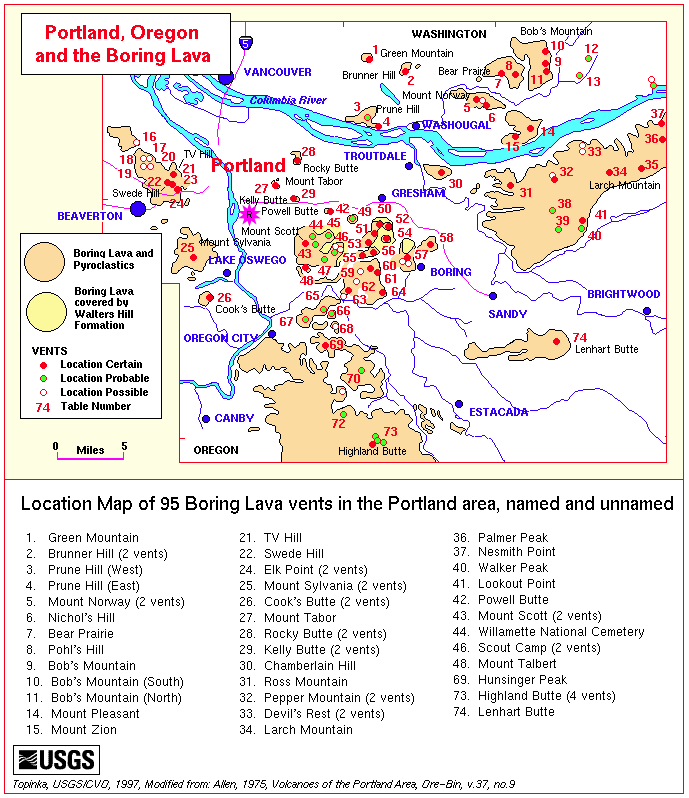Now, I’m not a science major, and the mere sight of a piece polysyllabic scientific jargon makes me confused and disoriented. However, this piece of Oregonian geological history really piques my interest and even boggles my literature-loving mind.
Portland sits atop a Plio-Pleistocene geological feature called the Boring Lava Field, named after the nearby city Boring, OR (which could be the punchline of this post, but we’ll continue). While Reed doesn’t sit directly on a dormant volcano, the Boring Lava Field consists of 32 dormant and extinct cinder cones just southeast of Portland. I suppose the boring part is that these cinder cones and shield volcanoes have been dormant for about 300,000 years. Yawn. Meanwhile, the visible vents are called “buttes,” which I know is pronounced “bju-t” but come on. Portland is surrounded by Boring Buttes, and I can’t help but find that to be hilarious.
According to the U.S. Geological Cascades Volcano Observatory, Vancouver, Washington, boring lava “is characteristically a light-gray phyric olivine basalt.” I tried to find a picture of it since I do not know what phyric olivine basalt looks like, but I suppose we will just have to use our imagination and envision a light-gray rock thing. For more info, I really recommend cruising around the USGS CVO website. It’s filled with information, and if you fancy topography then you are in for a treat.
Here is a panoramic view of the Boring Lava Field buttes as viewed from Downtown Portland (click to enlarge). You can see the white cap of Mt. Hood in the distance, but the bumpy hills closer to the foreground are the eastern dormant vents.
For an aerial view, here is a map of the Boring Lava in the greater Portland area. The little pink starburst next to the Willamette River is Reed College. The two nearest not-so-hot hot spots are the Powell and Kelly Buttes. While I’m certain that the Boring Lava Field isn’t the main reason Reedies flock to Portland, it is an interesting piece in Portland’s history.


